IoT PCB Supplier
South-Electronic
At South-Electronic, we are committed to delivering top-of-the-line IoT PCB that improve connectivity, dependability, and functionality, guaranteeing your devices perform flawlessly and intelligently.
Get Unmatched Quality with Our IOT PCB
Welcome to South-Electronic, your trusted source for IoT PCB designed to perform in any environment. Our PCB is built to power your applications, from smart home systems to industrial IoT devices.
Count on South-Electronic for top quality and reliability in your IoT projects. Our IoT PCB is designed to give your applications strong, reliable performance. Work with us to bring innovation and efficiency to your industry.
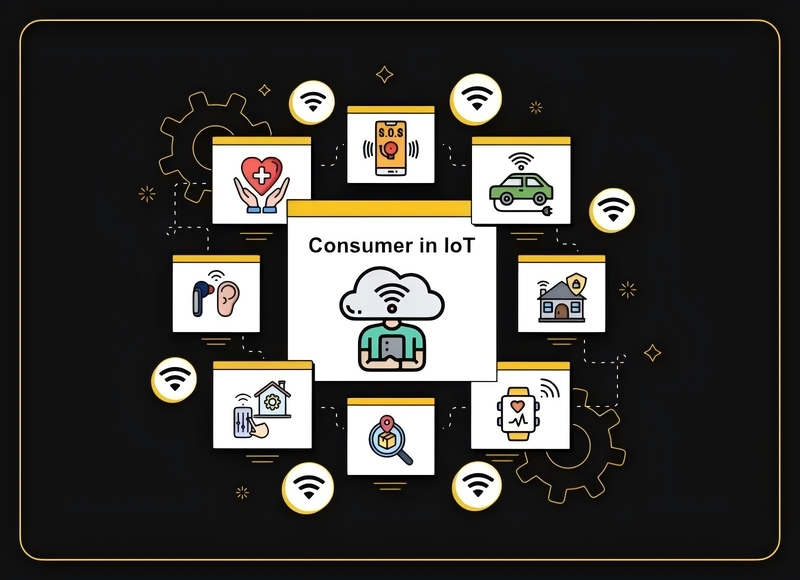
Consumer IoT (CIoT)
Devices for everyday use in personal environments, such as smart appliances and wearables.

Commercial IoT
Focused on improving business operations and customer service in industries such as retail and healthcare.
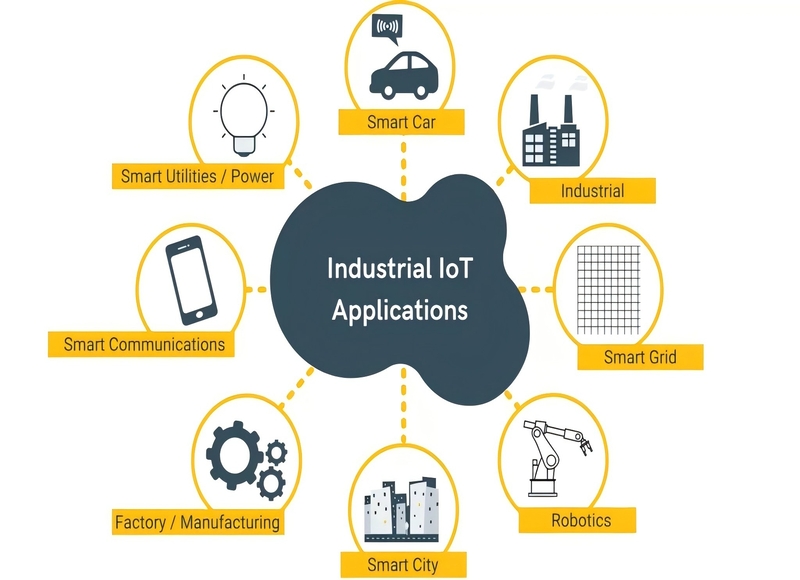
Industrial IoT (IIoT)
Uses technology in manufacturing and large-scale industrial processes to make them more efficient.
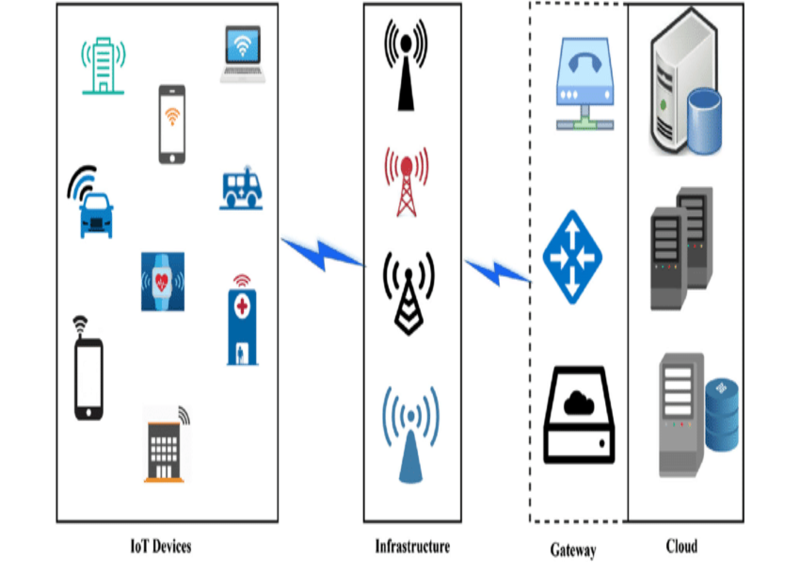
Infrastructure IoT
Aims to make urban and rural infrastructures more efficient through smart technology.

Smart Agriculture IoT
Focused on making farming better through technology, like crop monitoring and automated systems.

Energy Management IoT
Dedicated to making energy use and management better in homes and businesses.
Customize IoT PCB for Your Project!
At South-Electronic, we know how important it is to have a custom solution for your IoT project.
We are the leader in PCB innovation, and we can create custom designs and precise implementations to meet your exact needs.
We focused on delivering excellence in technology and solutions that will make your project a success.
-
Totally customizable designs:
Meet the diverse and exacting requirements of IoT applications in smart home systems, industrial automation, and wearable technology. Let customers specify PCB layouts, components, and connectivity options that are just right for their project.
-
More connectivity options:
Include advanced options for wireless communication like Wi-Fi, Bluetooth, NFC, and Zigbee, so you can easily connect to existing and emerging IoT networks. This is important for devices that need to communicate reliably in different environments, like crowded urban areas or remote locations.
-
Rock-Solid Data Security:
Make sure your PCB hasthe latest security protocols to protect sensitive data that's being transmitted across IoT devices. This is crucial for applications that involve personal data, like health monitors, or business-critical data in industrial settings.
-
Green Materials and Processes:
Show your commitment to sustainability by using environmentally friendly materials and manufacturing processes. This will appeal to purchasing managers and businesses that want to meet their corporate social responsibility goals and reduce their environmental impact when making electronic devices.
Easily Customize Your IoT PCB with South-Electronic
Get ready for a smooth customization journey with South-Electronic. We’ve made it easy to get your custom IoT PCB, eliminating common obstacles. Our efficient four-step process provides full support at every stage:

Discover Your Ideal PCB Solution
By checking out our wide selection of IoT PCB designed for all sorts of applications. Whether you’re upgrading smart homes, improving industrial systems, or creating wearable tech, you’ll find the perfect fit that meets your high standards and takes your projects to the next level.

Customize
to
Perfection:
Your projects deserve precision. customization with our expert team that’s ready to adapt each PCB to your specific needs. From design to functionality, everything is sculpted to integrate seamlessly into your unique environment, ensuring your devices perform exactly as you envisioned.

Experience Unmatched Quality and Reliability:
With South-Electronic, quality isn’t just a promise, it’s a guarantee. Our state-of-the-art manufacturing processes and rigorous testing ensure that every PCB you ordered are not only meets but exceeds industry standards.
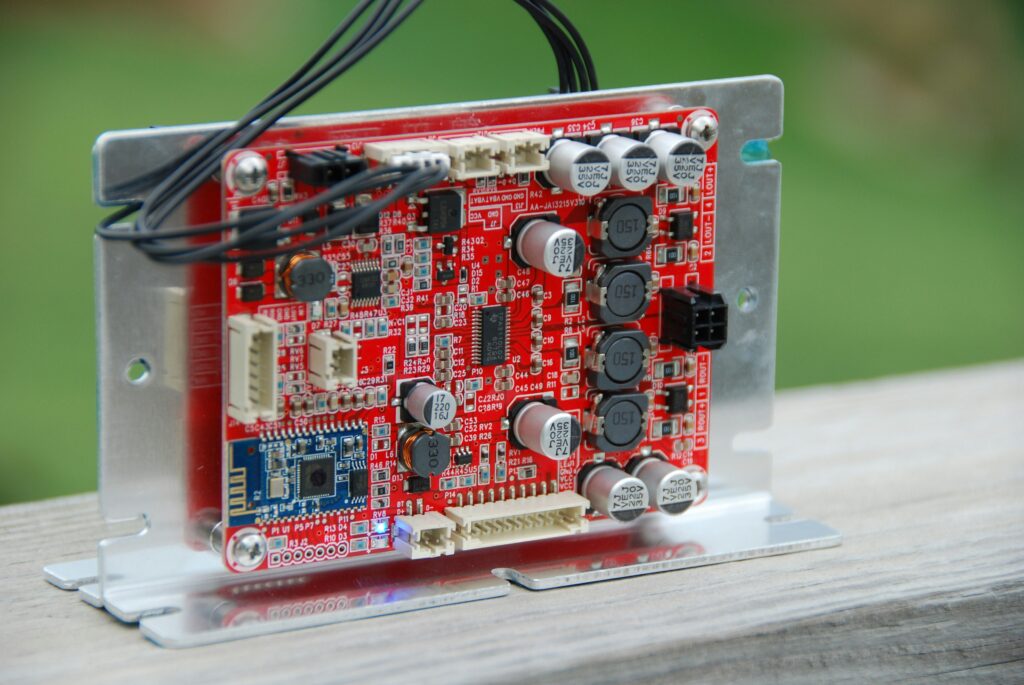
Get It Done Right with Full Support:
From the moment you contact us until your PCBs are up and running, our dedicated support team is with you every step of the way. We provide ongoing help and expert advice to make sure your products succeed in the market.
Why Choose South-Electronic?
Choosing South-Electronic means you’re partnering with an manufacturer which is high-quality IoT PCB for a wide range of applications.
-
Ordering Flexibility
At South-Electronic, we work with your project's unique needs. Order from 1pc PCB to thousands, depending on your requirements, from prototyping to mass production.
-
Experienced Team
Take advantage of the know-how of our team, each with rich experience in IoT PCB industry.
-
Fast Delivery
Thanks to our streamlined production process and non-stop operation, we guarantee quick turnaround times for your orders.
-
Quality Assurance
Trust in our quality with a 5-year warranty on all our IoT PCB. We’ll repair them at no extra cost, ensuring your operations continue smoothly and your projects never miss a beat.
-
Lifetime After-Sales Support
Choose South-Electronic and enjoy lifetime after-sales service. We’re here to support your IoT projects long after the sale, providing you with ongoing assistance and expert advice to ensure your long-term success.
Related Project We had Done
Customer Reviews
Common Questions
Most Popular Questions
Send Us A Message
The more detailed you fill out, the faster we can move to the next step.
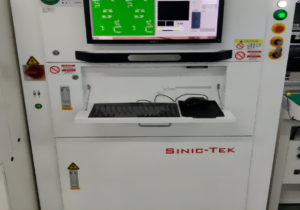
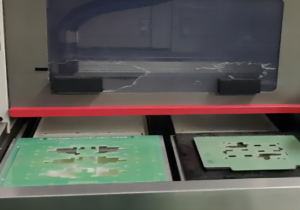
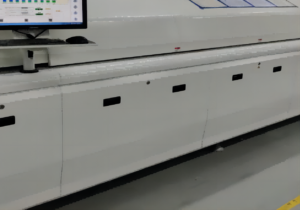
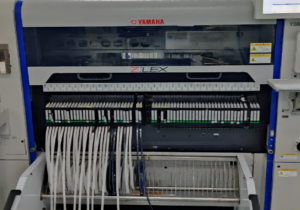
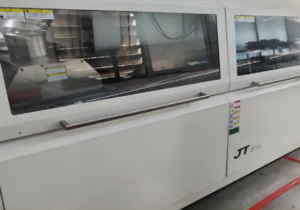
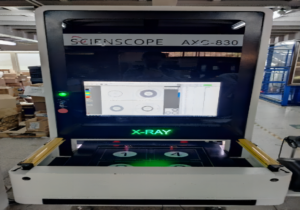

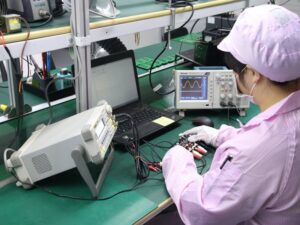

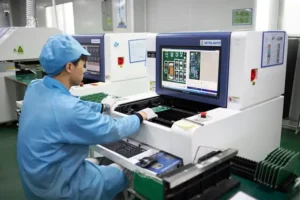



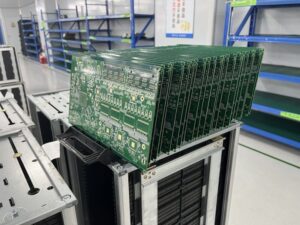

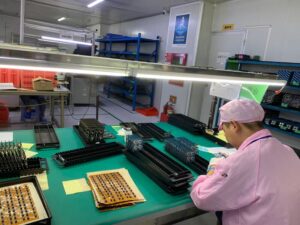



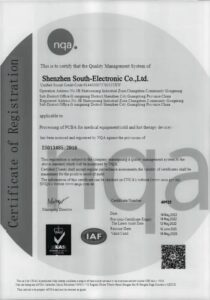
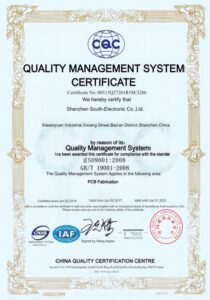







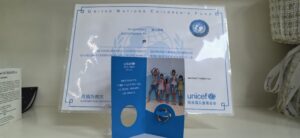

The Complete Guide For IoT PCB
Content
Chapter 1

Introduction: The Importance of IoT PCB
Changing the Way Of We Use Electronics
In today‘s world, technology is changing the way we interact with the world around us, and IoT PCB (Printed Circuit Board) is becoming more important than ever. When you use modern electronics, you‘ll quickly realize that at the smart device is a carefully designed IoT PCB. The PCB is more than just parts; it’s the backbone that connects and controls the electronics that make your everyday get smarter.
Unlocking Potential in Every Industry
No matter if you‘re in healthcare, automotive, or home automation, IoT PCB is a big deal. You get tools and devices that are more efficient, more reliable, and more capable. Imagine a world where your car could diagnose its own mechanical issues. Or your home could automatically adjust the thermostat based on your preferences. That’s what advanced IoT PCB can do now.
Trends In the Future
There are several key trends that are shaping the evolution of IoT PCB:
- Smaller:Device is getting smaller and so are the components inside them. IoT PCB is leading the way, getting smaller but more powerful. This trend benefits you by making devices sleeker, lighter, and more energy efficient.
- High-speed Communication:As you need faster data transfer rates for real-time applications, IoT PCB is evolving to support higher frequencies and more powerful communication protocols.
- Combine WIth AI and Machine Learning:IoT PCB is starting to include AI chips that can process data on the PCB itself. This means you’are getting faster responses and smarter decisions for the devices.
- Improved Durability:From outdoor farming equipment to wearable health monitors, the IoT PCB inside them is designed to be with harsh conditions and provide reliable performance.
Chapter 2
Basic: What Is IoT PCB?
What Is IoT PCB?
All the smart devices you use, from your smartphone to your smart refrigerator, has an Internet of Things (IoT) Printed Circuit Board (PCB) at its core. IoT PCB is designed specifically to support the functionality and connectivity of IoT devices. The PCB enable the device to communicate with the internet, allowing it to receive and send data, making it ‘smart’.
Key Components of IoT PCB
IoT PCB is more than just fiberglass with electronics; it’s intricate ecosystems made up of several components, each essential for various functions:
- Microcontrollers:These are the brains of your IoT device. Microcontrollers run the software that makes decisions based on the data they get.
- Sensors:Whether it’s sensing temperature, motion, or light, sensors provide the critical data that enable your devices interact intelligently with their environment.
- Connectivity Modules:These are what allow your device to connect to the internet or other devices. Whether it’s Wi-Fi, Bluetooth, or other protocols, these are what make your devices part of the IoT.
- Power Management:With devices often deployed in remote areas or required to run on battery power for extended periods, efficient power management circuits are crucial for keeping your devices running without frequent recharges.
How Does IoT PCB Work?
Knowing how IoT PCB work can help you understand how your favorite gadgets work and how they stay efficient. Here’s how they work:
- Signal Integrity:IoT PCB is designed to make sure that the signals that go across the PCB does not degrade over distance and time, making sure that the product will perform reliably for critical applications.
- Data Processing and Execution:The microcontroller processes the incoming data from the sensors and then does something based on what it is programmed to do. That could be turning on your heating system when the temperature drops or letting you know that there is a security breach.
- Energy Efficiency:The PCB is designed to use as little power as possible, which is important for devices that run on batteries. They make sure your IoT devices last longer, so you can use them without worrying about the battery dying.

Chapter 3

Design Considerations for IoT PCB
Designing PCB for the Internet of Things (IoT) is a complex process. These boards need to be small, efficient, and highly functional. Here are some important things to consider:
- Component Placement and Density:You need to maximize space without compromising on functionality or overheating.
- Signal Integrity:You need to make sure that signals are transmitted within the PCB without interference. This is crucial for maintaining the functionality of communications modules like Wi-Fi or Bluetooth.
- Power Management:Creating efficient power delivery paths to ensure that battery-operated devices last a long time and work reliably.
- Thermal Management:Using heat sinks or thermal vias to deal with the heat generated by small, high-performance parts.
Chapter 4
Material Selection: Materials and Manufacturing of IoT PCB
The IoT PCB Materials
The material used in the construction of IoT PCB is foundational to their performance, durability, and efficiency. From the substrate to the conductive metal, each material is selected with specific properties in mind to suit the demanding environments of IoT applications.
Key Materials in IoT PCB Manufacturing
- Materials:Materials that are commonly used to make the base of the PCB are called substrate. The most common substrate material is called FR4, which is a composite of fiberglass and epoxy resin. It is known for being a good electrical insulator and for being very stable mechanically. For IoT applications that operate at high frequencies, people often use substrates made of materials like Rogers or PTFE (Polytetrafluoroethylene) because they have very low electrical loss and perform well even when the environment changes.
- Copper:Copper is the material that make the conductive pathways connect different components on the PCB. It is the lifeblood of PCB. The thickness and purity of the copper have a big effect on how well the PCB conducts electricity and therefore how well it works.
- Solder Mask:The solder mask is a layer that put on top of the copper traces of the PCB, to protect them from getting oxidized and to keep them from getting shorted out by dirt or by things accidentally touching them. It is usually green, but it can be made any color you want based on how you want it to look or how you want it to work.
- Silkscreen:It’s easy to ignore, but the silkscreen layer is where you add labels and other critical indicators to your PCB. This makes assembly easier and helps you slove problems.
How Material Choices Affect Performance
- Thermal Management:If your device generates a lot of heat, you need a substrate that can dissipate heat quickly. Material choices like Aluminum-based PCB or those with high thermal conductivity can keep your device from overheating, which will make it last longer.
- Signal Integrity:For IoT devices that rely on fast communication, materials that reduce electromagnetic interference (EMI) and signal loss are critical. High-frequency materials like Rogers is designed to maintain signal integrity over longer distances and at higher frequencies.
- Environmental Resistance:If you’re using IoT devices outside or in tough environments, the materials need to be able to withstand things like extreme temperatures, humidity, and physical stress. Materials with higher resistance to these factors will make sure your devices work reliably, no matter where they are.
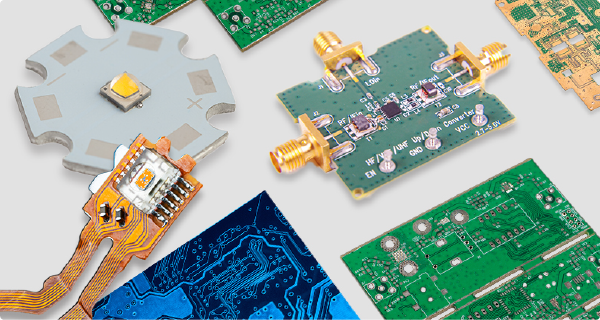
Chapter 5

Advanced Technology Innovation In IoTPCB
Creating a Smarter Future
In the fast-paced world of IoT, the PCB that power your devices are keeping up. Advances in IoT PCB technology aren’t just improvements; they’re revolutions that change how your devices interact with you and your world. From wearables to smart homes, these innovations make sure the devices you depend on are more connected, efficient, and capable than ever.
The Latest Innovations In IoT PCB
Flexible and Stretchable PCB:
The development of flexible and stretchable PCB is a big deal. So that the smartwatch fits perfectly on your wrist or medical devices that mold to your body—this is what FPC do. They open up new ways to put devices together and use them, making technology not just more wearable but also more useful in a bunch of different industries.
Built-in Components:
By building components like capacitors or chips directly into the PCB, manufacturers can reduce the size and weight of the PCB while increasing its functionality. For you, this means slimmer, lighter devices with more power.
High-Density Interconnect (HDI) Technology:
HDI technology makes us to manufacture finer lines and spaces, smaller vias, and higher connection pad density. This is important because we can achieve more functions in the same area, so we can make our IoT devices smarter without making them bigger.
3D Printing of PCB:
3D printing is changing the rules when it comes to prototyping and manufacturing PCB. It’s now possible to print complex, multi-layer boards with precision in a matter of hours, not weeks. This not only speeds up the development process, but also allows for more customization. What does this mean to you? Your designs can be validated, put into use, and enter market faster.
IoT Security Upgrades:
As IoT devices become more prevalent, the security of the PCB in these devices has become a major concern. Advanced encryption methods and secure data communication protocols are built directly into the PCB design to ensure your data remains secure and private.
Power Efficiency Innovations:
As sustainability becomes increasingly important, power efficiency in IoT PCB is a key area of innovation. Technologies such as improved power plane designs and energy harvesting components are being incorporated to extend battery life and reduce energy consumption, making devices more sustainable and cost-effective.
Chapter 6
Assembly Technique: How to Assemble IoT PCB?
Becoming a PCB Assembly Master
It’s not just about seeing how the IOT PCB is made—it’s about understanding how these critical components are carefully put together to ensure your IoT devices work reliably and as intended. Good assembly is key to getting the most out of your IoT devices, whether you’re a developer, a hobbyist, or a pro in electronics.
Key Assembly Methods for IoT PCB
Surface Mount Technology (SMT):SMT is the foundation of modern PCB assembly, allowing electronic components to be mounted directly onto the surface of the PCB. This method is not only efficient, but it’s also critical because it enables a higher component density, which is essential for the small form factors of IoT devices.
Through-Hole Technology (THT):THT is still relevant, especially for components that need strong physical connections through the PCB. This means for you that devices that get physically stressed are more durable and reliable.
Mixed Technology Assembly:Combining SMT and THT can be the best , offering you the benefits of both high component density and durable connections. This method is particularly beneficial for complex IoT devices that need to be both compact and rugged.
Ways to Make Assembly Faster
Automated Optical Inspection (AOI):Automated Optical Inspection (AOI):Once your PCB is assembled, you need to make sure that every components are in the right place and soldered correctly. AOI uses high-resolution cameras to automatically check the solder connections and component placement. This speeds up the inspection process and makes it more accurate, so you can be confident that your PCB is reliable.
Reflow Soldering:This technique involves applying solder paste to a PCB and then heating the board to melt the solder paste, creating a strong connection. Reflow soldering is particularly good for making high-quality solder joints on SMT components, which is important to ensure that your IoT device functions perfectly.
Selective Soldering:For components that can’t be reflow soldered, you can use labour soldering to control exactly where solder is applied, so you don’t damage sensitive components with heat. This control helps you make sure even the most delicate components are securely and safely assembled.
Pro Tips for Effective IoT PCB Assembly
Consistent Documentation:
Make sure you document all your assembly processes. This will help you keep things consistent from batch to batch and will also help you slove problems. It will save you time and money in the long run.
Quality Control Checks:Do regular quality control check throughout the assembly process. This proactive approach reduces the risk of failure, ensuring the device you rely on is up to standard from the start.
Working with Professional Engineer:Effective assembly starts with good design. Working closely with professional PCB engineer can help streamline the assembly process, making it smoother and more efficient, which directly benefits the performance and reliability of the end product.

Chapter 7
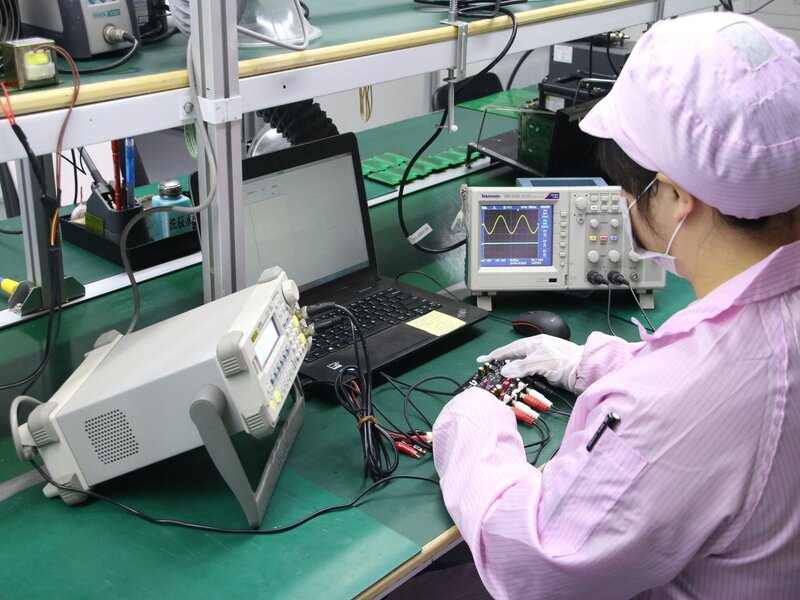
Testing and Quality Control: Make Sure Your IoT PCB is Working well
Making Sure Every Device is Perfect
For IoT devices, the integrity of a PCB can make or break the functionality and reliability of the product. For you, understanding the importance of rigorous testing and quality control means having confidence in the products you use, develop, or sell. It’s not just about functionality; it’s about making sure each device meets high standards of quality and safety.
IoT PCB Core Testing Procedures
In-Circuit Testing (ICT): ICT is one of the most comprehensive testing methods used to check virtually every component on an IoT PCB. This test is using a bed-of-nails tester to make contact with each circuit node to test for shorts, opens, resistance, capacitance, and other basic quantities that ensure the PCB’s functionality. For you, ICT means that the PCB in your devices are verified for their operational integrity before they ever reach your hands.
Functional Testing: This type of testing checks the performance of the PCB under conditions that simulate its real-world operation. Functional testing makes sure the PCB does what it’s supposed to do in the real world, so you can trust your IoT devices to work when you need them.
Automated Optical Inspection (AOI): AOI is used in the early stages of manufacturing to catch soldering issues and component placement problems using high-definition cameras. This helps make sure that any potential problems are identified and fixed early on, saving you from future reliability issues.
How to Keep Standards High in Your Business
Traceability Systems: Installing traceability systems in your PCB manufacturing operation enables you to track and document the history of every components used on the PCB. This is important because it guarantees that if a defect is discovered in one batch, you can trace it back to its origin, preventing future problems.
Statistical Process Control (SPC): We use SPC techniques to monitor and control the manufacturing process using statistical methods. This helps us maintain consistent quality. For you, this means fewer defects and higher reliability in the final products.
ISO Certifications: Manufacturers who follow ISO9001& ISO14001 quality management standards are more likely to produce high-quality and reliable PCB. For you, choosing products from ISO-certified manufacturers means you can trust that the manufacturing processes meet international standards.
Proactive Quality Assurance
Regular Supplier Audits: We regularly audit our suppliers and manufacturers to make sure that the materials and components we use in our PCB meet the standards we require. What that means for you is that every components in your IoT device meets our quality specifications.
Continuous Improvement Programs:Quality isn’t static, and continuous improvement programs ensure that PCB manufacturers are always looking for ways to make their product quality better. This means that you get better product reliability and performance.
Chapter 8
Common Challenges and Solutions: Sloving IoT PCB Issues
Navigating the Complexity of IoT PCB
For you, being able to handle the challenges that come with IoT PCB means smoother operation and longer lifespans for your devices. Here’s a look at common problems you might face in both the design and usage phases of IoT PCB and the practical solutions to address them.
Design Challenges and Their Solutions
Signal Integrity Issues: As devices get smaller and the demand for faster data transmission increases, maintaining signal integrity can be a challenge.
- Solution:
Use advanced design techniques like differential pairs, proper routing techniques, and impedance control. For you, this means either investing in quality design practices or choosing products from manufacturers who do.
- Solution:
Heat Management: Overheating can reduce the efficiency and lifespan of electronic components.
- Solution:
Add thermal relief pads and use materials with better thermal conductivity. You can also design the layout to include heat sinks or cooling mechanisms where necessary.
- Solution:
Power Supply Noise and Interference:
Power supply noise and interference can cause erratic behavior and reduced performance.
- Solution:
Make sure you decouple properly and design your power distribution network correctly so it doesn’t interfere with you. This means using adequate bypass caps and ensuring good grounding.
Operational Challenges and Their Solutions
Environmental Stress: IoT devices always work in harsh environments, which can cause them to malfunction.
- Solution:
Use conformal coatings to protect the PCB from environmental factors like moisture, dust, and chemicals. For you, it’s important to choose devices with the right protection rating.
- Solution:
Component Failure:Components can fail due to manufacturing defects, wear, and tear or environmental influences.
- Solution: Test and replace parts that may break. Work with professional engineer to check when things may break, and repairs them before they do.
Electromagnetic Interference (EMI):
EMI can disrupt the normal operation of electronic equipment.
- Solution: Design the PCB with proper EMI shielding techniques, including using EMI filters, shielding cabinets, and ensuring that layout minimizes interference paths.
Pro Tips for Preventative Measures
Regular Firmware Updates: Regular Firmware Updates:Keep your device firmware updated. This will fix any bugs or vulnerabilities, improve functionality, and add new features and security patches.
Thorough testing: Test your design thoroughly before deploying it. This will help you find problems before they occur.
Quality Assurance Agreements: When choosing IoT devices, always look for certifications and quality marks.

Chapter 9

Case Study: IoT PCB Applications
Transforming Industries with IoT PCB
Seeing is believing. Here are a few case studies that illustrate the transformative impact of IoT PCB across different industries. Each case study not only shows you the applications, but also highlights how these technologies solve real-world problems. Hopefully, these examples will inspire you to think about how you can use IoT PCB in your own projects or business.
Smart Agriculture:Improving Crop Management
- Overview: In the agriculture industry, IoT PCB is used to create sensor networks that monitor soil moisture, temperature, and nutrient levels.
- Impact: Farmers get real-time data that helps them make better irrigation and fertilization decisions, resulting in higher crop yields and reduced water usage.
- For You: This means more sustainable farming practices and potential savings on water and fertilizer costs.
Healthcare: Remote Patient Monitoring Systems
- Overview: IoT PCB is the key component in devices that remotely monitor patient health parameters, such as heart rate or blood sugar levels.
- Impact:These devices provide healthcare providers with continuous data, allowing for timely interventions and reducing the need for hospital visits.
- For You:This is not just about convenience, but a new standard in personalized and preventative care.
Automotive: Smart Vehicle Systems
- Overview: In the automotive industry, IoT PCB is used in systems that assist with navigation, predictive maintenance, and in-car entertainment.
- Impact:Makes driving safer and cars more efficient by giving you real-time diagnostics and updates.
- For You: This means a safer, more enjoyable driving experience and efficient maintenance of your vehicle.
Manufacturing: Predictive Maintenance Sensors
- Overview: IoT PCB powers sensors and devices, predicting when machinery will require maintenance before it fails.
- Impact: Reduces downtime and maintenance costs by predicting machine failures and scheduling repairs during non-operational hours.
- For You: This means you can save your time and cost.
Smart Home:Better Home Automation
- Overview: IoT PCB is used in smart home devices such as thermostats, security cameras, and lighting systems.
- Impact: These devices automate things based on user preferences and real-time environmental data, making your life more comfortable and saving you money.
- For You: This means living in a home that adjusts to your needs, saving you time and money.
Chapter 10
How To Choose the Right IoT PCB Supplier?
The Key to Successful IoT Project
It’s critical for you to choose the right IoT PCB supplier. It’s not just about getting the best price; it’s about ensuring your IoT project will be successful.Here’s the guide of how to choose the supplier that truly meets your needs.
Assessing Technical Expertise
Assessing Technical Expertise:The first step is to evaluate the supplier’s technical capabilities. Can they handle the complexity of your design?
- Prototyping Services:Ensuring your supplier can quickly complete prototyping can help you test and refine your designs before full production, reducing the risk of costly mistakes.
Evaluating Manufacturing Capacity
- Order Flexiblity:Your supplier needs to be able to make samples quantity or mass production as needed. This is important because you can respond to market demand without sacrificing lead times or cost.
- Facilities and Equipment:Check out the supplier’s manufacturing facilities and equipment. Modern, well-maintained equipment and clean, organized facilities are good signs that the supplier can handle large volumes while maintaining quality.
- Turnaround Times:Fast production time can be a competitive advantage. For you, this means you can get your IoT devices to market faster.
Verifying Quality Compliance
- Certifications:Look for suppliers with certifications like ISO 9001, ISO 13485, or specific industry standards relevant to your IoT applications. These certifications aren’t just pieces of paper; they’re assurances that the supplier adheres to stringent quality management practices.
- Quality Control Processes:Ask about the supplier’s quality control processes. This includes PCB testing methods, inspection standards, and how they handle non-conformance issues. For you, strict quality control means fewer defects and higher reliability in your IoT products.
- Material Traceability:Make sure the supplier follows material traceability. This allows you to track and verify all materials used in your PCB, which is crucial to keep your device sophisticated and safe.

Get in touch
Where Are We?
Industrial Park, No. 438 Donghuan Road, No. 438, Shajing Donghuan Road, Bao'an District, Shenzhen, Guangdong, China
Floor 4, Zhihui Creative Building, No.2005 Xihuan Road, Shajing, Baoan District, Shenzhen, China
ROOM A1-13,FLOOR 3,YEE LIM INDUSTRIAL CENTRE 2-28 KWAI LOK STREET, KWAI CHUNG HK
service@southelectronicpcb.com
Phone : +86 400 878 3488
Send us a message
The more detailed you fill out, the faster we can move to the next step.



